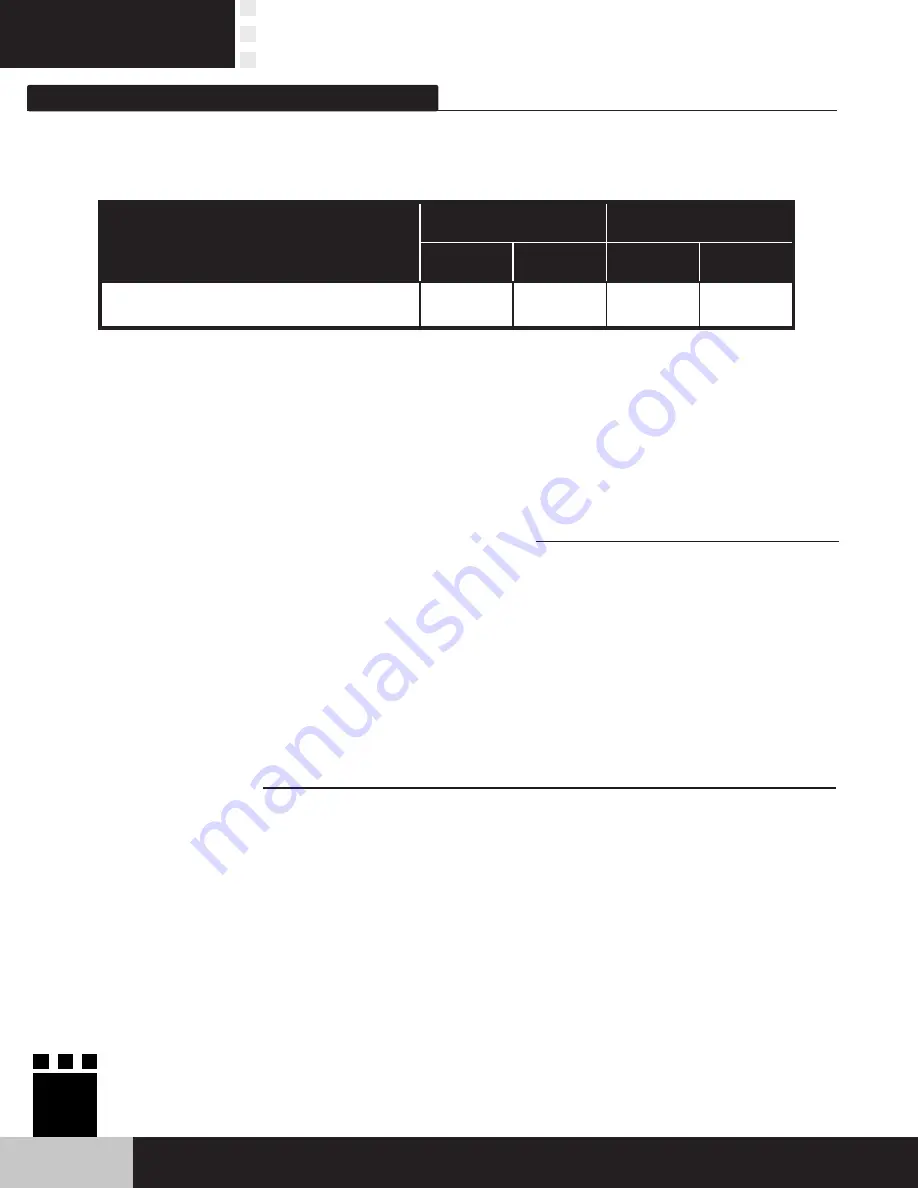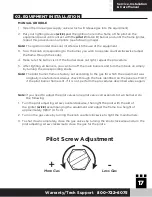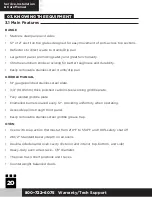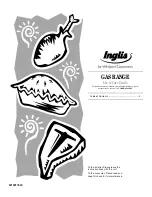
MODEL
Combustible
Non-combustible
Rear
Sides
Rear
Sides
Range Combo with Manual Griddle
8"
6"
0"
0"
800•722•6075
Warranty/Tech Support
Service, Installation
& Care Manual
8
02. EQUIPMENT INSTALLATION
Clearances
The appliance area must be kept free and clear of all combustibles.
Rating Plate
Information on this plate includes the model, serial number, BTU/h input of the
burners, operating gas pressure in inches WC, and whether the appliance is orificed for
natural or propane gas. When communicating with factory about a unit or requesting
special parts or information, rating plate data is essential for proper identification.
2.2 Recommendations Before Installation
Before installing the gas supply system, observe the pipes and fittings, check
the components for dirt, clean internally with compressed air to eliminate
possible particles, and prevent burners and valves from becoming clogged.
After cleaning, use thread sealant to connect the equipment to the gas network. For
correct application, avoid concentrating the compound on the first two threads of the
pipe, otherwise it may generate particles that will clog the system injectors.
2.3 Gas Installation
Your gas appliance will give you peak performance when the gas supply line is of
sufficient size to provide the correct gas pressure. The gas line must be installed to
meet the local building codes or National Fuel Gas Code ANSI Z223.1 Latest Edition.
In Canada, install the appliance in accordance with CAN/CGA-B149.1 or .2 and local
codes. Gas line sizing requirements can be determined by your local gas company
or, in North America, by referring to the National Fuel Gas Code, Appendix C, Table
C-4 (for natural gas) and Table C-16 (for propane). The gas line needs to be large
enough to supply the necessary amount of fuel to all appliances without losing
pressure to any appliance.









































